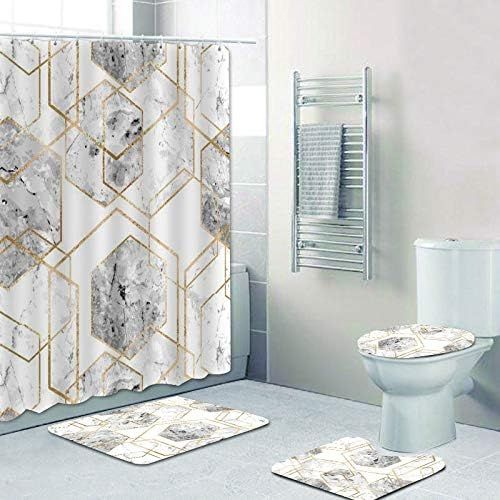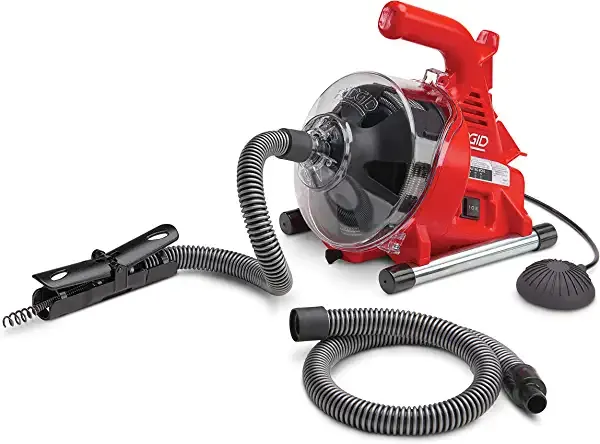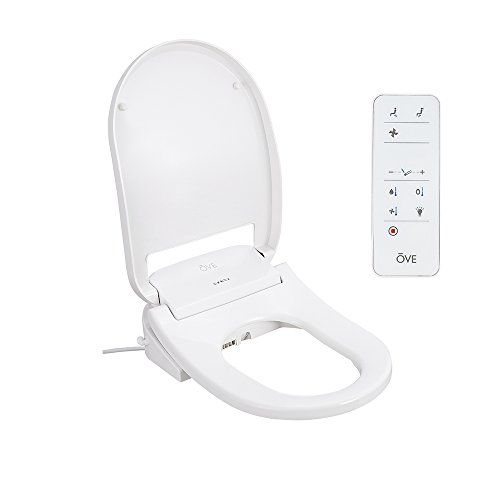What To Do If Bathroom Floods
If you ever find yourself in the unfortunate situation of a bathroom flood, it’s important to know what steps to take to minimize the damage and ensure your safety.
This article will guide you through the process of dealing with a flooded bathroom, providing you with practical and technical advice on how to handle the situation.
First and foremost, you need to assess the situation and ensure that you are not in immediate danger. Once you’ve done that, it’s crucial to shut off the water source and electricity to prevent further damage and potential hazards.
From there, you’ll need to remove excess water using towels or a wet/dry vacuum. Identifying and fixing the cause of the flooding, such as a clogged drain or burst pipe, should be your next priority.
After that, you’ll need to dry and clean the affected area to prevent mold and further damage. Finally, you’ll want to check for any structural damage and make any necessary repairs.
By following these steps and taking preventative measures, you can avoid future bathroom floods.
Key Takeaways
- Assess the situation and ensure safety
- Turn off the water source and electricity
- Remove excess water using towels or a wet/dry vacuum
- Address the cause of the flood, such as a clogged drain or burst pipe
Assess the situation and ensure your safety
Take a moment to assess the situation and make sure you’re safe before diving into the chaos of a flooded bathroom. Start by turning off the water supply to prevent further flooding.
Check for any potential hazards, such as electrical outlets or appliances that may have come into contact with water. If there is standing water, be cautious of slipping and falling.
Next, evaluate the severity of the flooding and determine if it poses an immediate threat to your safety. If the water level is high or there is structural damage, it may be necessary to evacuate the area and seek professional help.
Remember to follow emergency response procedures and contact the appropriate authorities if necessary. Stay calm and prioritize your safety above all else.
Shut off the water source and electricity
To address the issue of water damage in your bathroom, it’s imperative that you promptly shut off both the water source and the electricity. This will help prevent further damage and ensure your safety. Here are some steps to follow:
-
Locate the main water shut-off valve, typically found near the water meter or in the basement. Turn it clockwise to shut off the water supply to the bathroom.
-
If you can’t find the main shut-off valve or it isn’t working, look for individual shut-off valves under the sink or behind the toilet. Turn these valves clockwise to stop the water flow.
-
Next, locate the circuit breaker panel and switch off the power supply to the bathroom. This’ll prevent any electrical hazards due to the water.
-
Remember to contact water damage restoration professionals and emergency plumbing services to assess the situation and repair any damage.
By taking these immediate actions, you can minimize the impact of a bathroom flood and ensure a quicker recovery.
Remove excess water using towels or a wet/dry vacuum
You can start by using towels or a wet/dry vacuum to remove any excess water from the affected area. Begin by grabbing a stack of absorbent towels and placing them on the floor to soak up as much water as possible. Gently press down on the towels to encourage absorption.
Once the towels are saturated, wring them out into a bucket or sink. Repeat this process until you have removed as much water as you can. Alternatively, you can use a wet/dry vacuum to suck up the excess water. Make sure to read the manufacturer’s instructions before using the vacuum and select the appropriate setting for water removal.
Slowly move the vacuum over the wet areas, being careful not to damage any surfaces. Empty the vacuum’s container as needed to prevent overflow. By using towels or a wet/dry vacuum, you can effectively remove excess water and prevent further damage from occurring.
Identify and fix the cause of the flooding, such as a clogged drain or burst pipe
First, it’s crucial to identify and resolve the root cause of the flooding, such as a clogged drain or burst pipe, to prevent future incidents and potential damage.
If you suspect a clogged drain, start by using a plunger or a plumbing snake to remove any blockage. If that doesn’t work, you may need to try using a chemical drain cleaner or call a professional plumber for assistance.
Signs of a burst pipe include water gushing out or a sudden decrease in water pressure. In this case, turn off the main water supply immediately to prevent further damage and call a plumber right away.
Remember, addressing the cause of the flooding is essential to avoid recurring incidents and protect your bathroom from extensive damage.
Dry and clean the affected area to prevent mold and further damage
Once the cause of the flooding is resolved, it’s crucial to swiftly dry and clean the affected area to prevent mold and minimize further damage.
To start, remove any standing water using a wet/dry vacuum or mop. Open windows and use fans or dehumidifiers to increase air circulation and aid in drying.
Thoroughly wipe down surfaces with a disinfectant cleaner to remove any bacteria or contaminants. Pay close attention to corners, baseboards, and grout lines, as these areas are prone to mold growth.
Use a solution of bleach and water to kill any existing mold spores and inhibit future growth. Be sure to wear gloves and protective eyewear when using bleach.
Once the area is dry, consider applying a mold-resistant paint or sealant to further prevent mold growth.
Regularly inspect and maintain the bathroom to address any potential issues and implement preventive measures such as keeping drains clear and repairing any leaks promptly.
Check for any structural damage and make necessary repairs
After drying and cleaning the affected area to prevent mold and further damage, it’s essential to check for any structural damage and make necessary repairs in your flooded bathroom. This step is crucial to ensure the safety and stability of your bathroom.
Begin by inspecting the walls, floors, and ceiling for any signs of water damage or weakened structures. Look out for sagging ceilings, cracks in the walls, or soft spots in the flooring. If you identify any structural issues, it’s recommended to consult a professional contractor or plumber to assess the damage and provide guidance on the repairs needed.
Remember, addressing structural repairs promptly will help prevent any potential hazards and maintain the integrity of your bathroom.
To effectively handle this situation, consider the following steps:
- Conduct a thorough inspection of all bathroom structures.
- Consult a professional contractor or plumber for expert advice.
- Prioritize repairing any identified structural issues.
- Regularly monitor the area to ensure the repairs are effective.
By following these guidelines, you can efficiently address any structural damage caused by the water source and restore your bathroom to its optimal condition.
Take preventative measures to avoid future bathroom floods, such as regular maintenance and inspections
To prevent future bathroom flooding, it’s essential to regularly maintain and inspect your bathroom. Regular maintenance is of utmost importance as it helps identify and address any potential issues before they escalate into major problems.
Start by checking the plumbing system for any leaks or clogs. Inspect the toilet, sink, and shower for any signs of wear and tear, such as loose connections or cracked pipes. Additionally, ensure that the seals around the bathtub and shower are intact and in good condition.
Common causes of bathroom floods include malfunctioning toilet valves, faulty plumbing connections, and blocked drains. By performing regular maintenance and inspections, you can catch these issues early on and take necessary precautions to avoid future bathroom floods.
Frequently Asked Questions
How do I assess the situation and ensure my safety when my bathroom floods?
Assess your safety by turning off the water supply and electrical power to the bathroom. Look for any visible signs of damage and address them immediately. Prevent further damage by removing excess water and drying the area thoroughly.
What should I do if I cannot locate the water source to shut it off?
If you cannot locate the water source to shut it off, immediately contact an emergency plumber. They have the expertise to locate and shut off the water supply, preventing further water damage. Afterwards, consider hiring a water damage restoration service to address any lingering issues.
Can I use a regular vacuum instead of a wet/dry vacuum to remove excess water?
To ensure vacuum safety, it is recommended to use a wet/dry vacuum instead of a regular one to remove excess water. Wet/dry vacuums are specifically designed to handle liquids and offer benefits like powerful suction and specialized filters for effective water extraction.
How can I identify the cause of the flooding if it is not a clogged drain or burst pipe?
To identify leaks in your bathroom, thoroughly inspect all plumbing fixtures and connections. Look for signs of water damage, such as discoloration or mold growth. If you cannot find the source, it is recommended to seek professional assistance.
Are there any specific cleaning products I should use when drying and cleaning the affected area to prevent mold?
To prevent mold, use specific cleaning products like bleach or hydrogen peroxide to clean and disinfect the affected area thoroughly. Make sure to dry the area completely to discourage mold growth.
Conclusion
In conclusion, remember to stay calm and assess the situation if your bathroom floods. Your safety is the priority, so shut off the water source and electricity immediately.
Use towels or a wet/dry vacuum to remove excess water and then identify and fix the cause of the flooding.
Dry and clean the affected area thoroughly to prevent mold and further damage. Don’t forget to check for any structural damage and make necessary repairs.
Lastly, take preventative measures to avoid future bathroom floods through regular maintenance and inspections. Stay proactive and keep your bathroom safe and dry.










.jpg)








